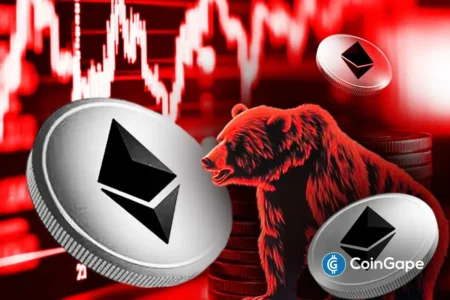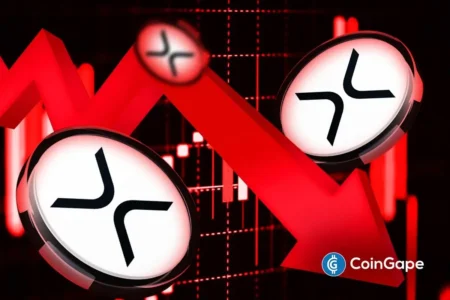Why the Crypto Market is Down: Analyzing the Impact of Recent Events
The crypto market is currently facing a downturn, primarily ignited by market reactions to U.S. President Donald Trump’s recent announcements. Contrary to earlier speculation regarding potential tariffs, Trump did not mention them, yet the market remains in a bearish state. As of today, the market cap has fallen approximately 3%, reaching $3.6 trillion, with Bitcoin leading the decline after peaking earlier in the month. In this article, we will explore the various factors contributing to the current downtrend in the cryptocurrency market.
The Role of Trump’s Announcement
Despite the lack of tariff-related news from President Trump, his announcement has caused significant ripples in the market. TradingView data indicates that Bitcoin dropped sharply from an intraday high of $111,000, raising concerns among traders and investors. This fear was further compounded by the activity of a major player in the market, the so-called “Trump Insider Whale,” who opened a substantial $127 million short position on Bitcoin just before the announcement. This pattern of behavior, especially following a similar short sale before a previous tariff announcement, has heightened anxiety among market participants, leading to a broader sell-off.
Increased Selling Pressure from Whales
Amid these developments, selling pressure from large crypto holders, often referred to as “whales,” has amplified the bearish sentiment. An analysis by CryptoQuant revealed a significant trend in miner behavior, with 51,000 BTC deposited into exchanges since October 9. The influx of Bitcoin peaked on October 11, as 14,000 BTC were deposited in a single day. Historically, Bitcoin miners have acted as major holders of BTC, so their decision to sell off substantial quantities raises red flags for market health. This behavior, combined with ongoing selling from established Bitcoin “OG” whales, has created a precarious situation for Bitcoin prices.
The Impact of the Hyperunit Whale
In addition to general selling trends, specific large entities have been influential in this downturn. According to Arkham on-chain analytics, the Hyperunit whale—a notable figure in previous market shifts—deposited $222 million worth of Bitcoin to Coinbase. This action has sparked speculation that this whale may have sold off their Bitcoin immediately prior to the price drop. Such strategic moves by influential players are often indicative of a market that is lacking confidence, further driving down prices across the board.
Shifting Focus to Gold
Another critical aspect of the current market environment is the shifting dynamics between Bitcoin and more traditional assets like gold. Analysts have observed that while investors often look at both assets as part of a “debasement trade,” gold has increasingly taken the limelight in recent months. Crypto analyst Plur pointed out that Bitcoin has struggled to maintain momentum, which has allowed gold to capture more investor interest. Concerns regarding the sustainability of the current crypto uptrend, coupled with mixed feelings about Bitcoin’s four-year cycle, have led some to speculate that BTC may be nearing its peak.
The Future Outlook for Bitcoin and Crypto
Despite the current market challenges, there are signals that may indicate potential recovery. Plur forecasts that Bitcoin could begin an upward trajectory soon, as it typically follows the price movements of gold with a lag of 60 to 90 days. However, he warns that the market may remain volatile until clarity emerges around the U.S.-China trade dynamics. The overall sentiment suggests that while there are challenges ahead, the bull cycle for crypto assets could still have significant potential to unfold, provided that key players begin to accumulate rather than offload their assets.
Conclusion
In summary, the erosion of confidence in the crypto market, largely driven by key announcements and the behavior of whales, has led to a notable decline in prices. Understanding the current landscape requires an analysis of the interconnected roles of influential market players and traditional assets like gold. As we look to the future, market participants must be prepared for potential volatility but remain optimistic, considering that foundational shifts may lead to renewed bullish momentum in the crypto market.
















